- Home
- slideshows
- miscellaneous
- Why San Francisco is a nightmare, according to science
Why San Francisco is a nightmare, according to science
The Bay Area is a veritable smorgasbord of complex fault lines. No less than seven different faults converge here.

It's the bigger, disastrous quakes scientists are really worried about. And they say San Francisco is due for another soon.
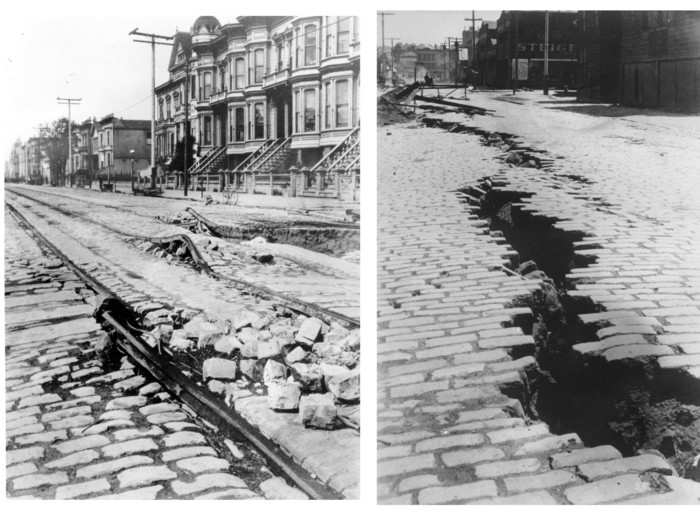
In 2007, the USGS determined that there's about a "63% probability of a magnitude 6.7 or greater earthquake in the Bay Area" by 2037.
Estimates have only gotten worse since then. One recent report suggests that there's a 76% chance the Bay Area will experience a magnitude 7.2 earthquake some time in the next 30 years.
Seismologists are most concerned about two fault lines in particular: the San Andreas and the Hayward.
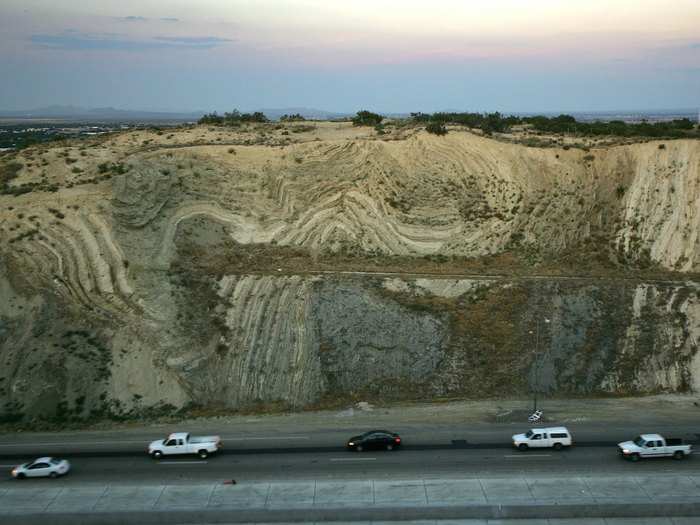
Anything higher than a 7.9 on the San Andreas Fault line, which runs from Mendocino down to Mexico, would put "approximately 100%" of the population of San Francisco at risk, while a 6.9 quake from the Hayward Fault could spell trouble for nearly everyone who lives and works there, according to the city.
Some geologists are already predicting that 2018 is going to be a banner year for quakes around the world.
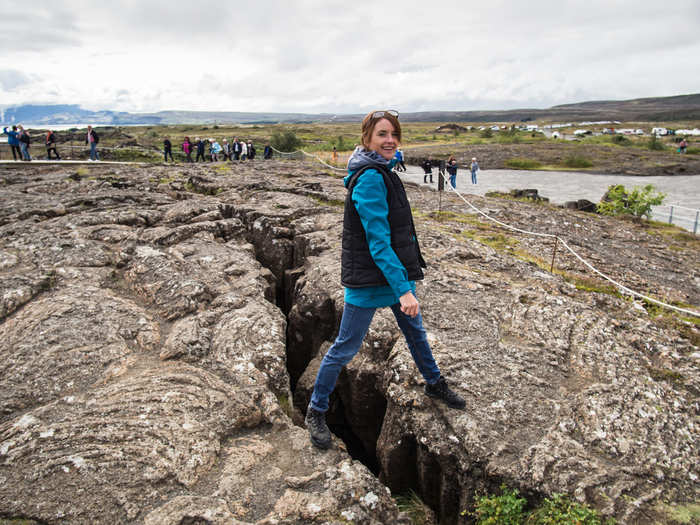
The Earth is turning a little slower than usual right now, which puts extra squeeze on tectonic plates, and may mean more high-magnitude shakes are on the way.
Some neighborhoods in the city are built on less-than-rock-solid heaps of trash.
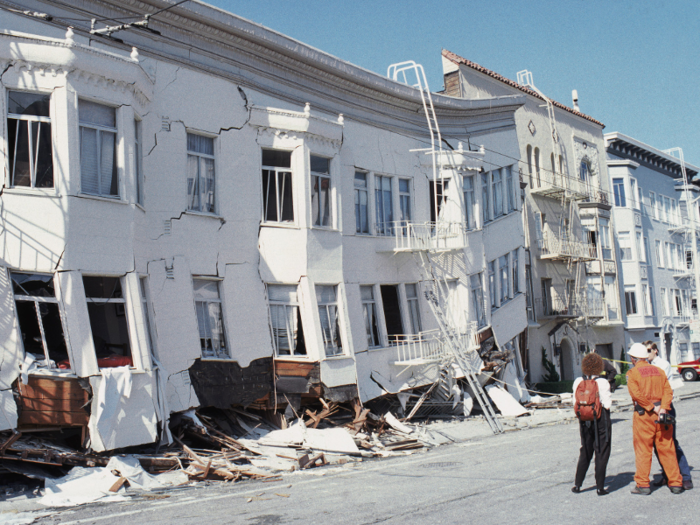
Old 19th century trash that was dumped out to widen the city could quickly level the bottoms of many homes during a big quake. It already did once in 1989.
Experts estimate that places like the Marina neighborhood, pictured above, would today be 50% destroyed by anything higher than a 7.2 magnitude earthquake on the San Andreas Fault.
But San Francisco's quake threat doesn't stop at the shore. Tremors could hit the city from the sea, if powerful tsunamis rush in from places across the water like Russia, Alaska or Japan.
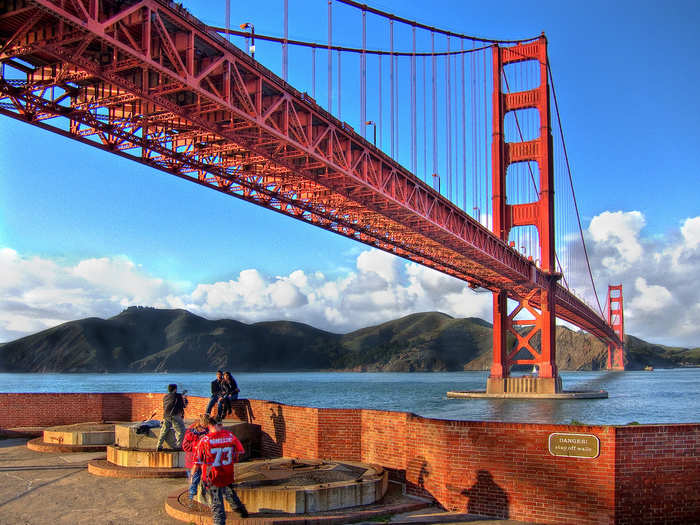
That's less likely than a Californian earthquake, because typically, tsunami waves aren't super-serious once they reach San Francisco's shores. According to the city, most of the tsunamis that hit the Bay Area from Alaskan earthquakes are less than a foot high by the time they make landfall.
But, there's still a chance that a tsunami moving in from the Cascadia subduction zone further north could come into the Bay Area at more than 16 feet high, UC Santa Cruz earth sciences professor Steven Ward told KQED.
Earthquakes can also unleash tough-to-control fires, as they did here in 1906, covering much of the city in flames and smoke.
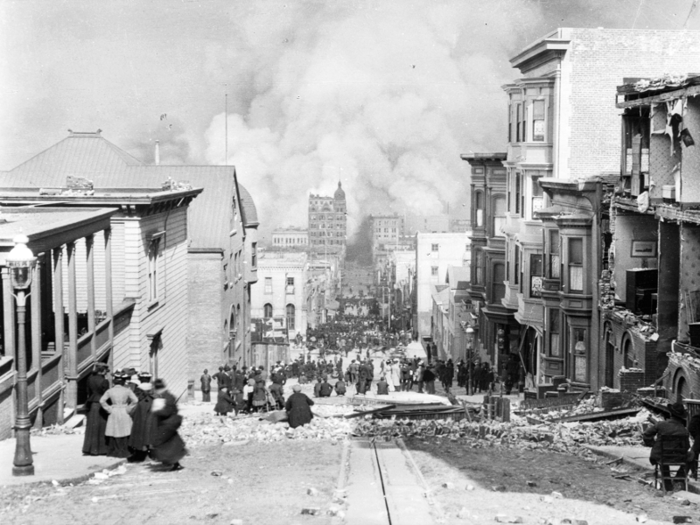
Thankfully, the city itself isn't perpetually threatened by wildfires, like much of the rest of the state. But the nearby vineyards of Napa Valley did not escape the 2017 wildfire season unscathed.
In October, more than 3,500 homes, buildings and structures were reduced to ash, and at least 31 people were killed.

Many people in San Francisco took to wearing masks so they wouldn't have to breathe the smoky fumes wafting in.
In the nearby East Bay, a 1991 "firestorm" triggered by a grass fire killed 25 people.
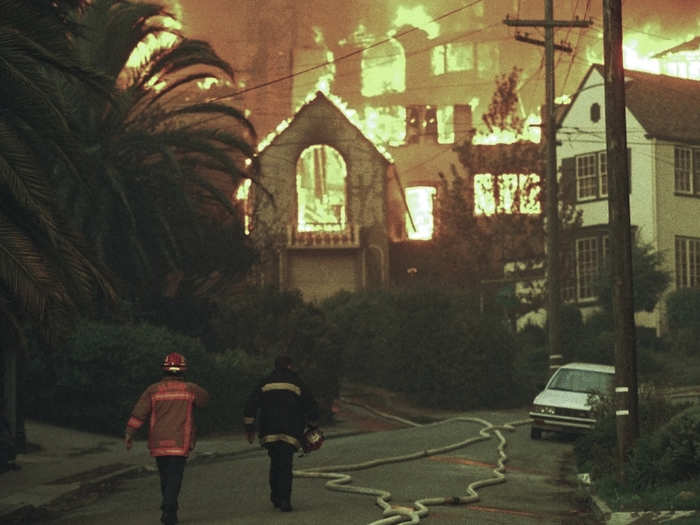
East Bay resident Will Wright, who had a near-death experience when his home burned to the ground, was inspired by the tragedy to create the wildly popular game "The Sims," according to local news site Berkeleyside.
Shaking aside, the region is bracing to see more water coming in over the next several decades.
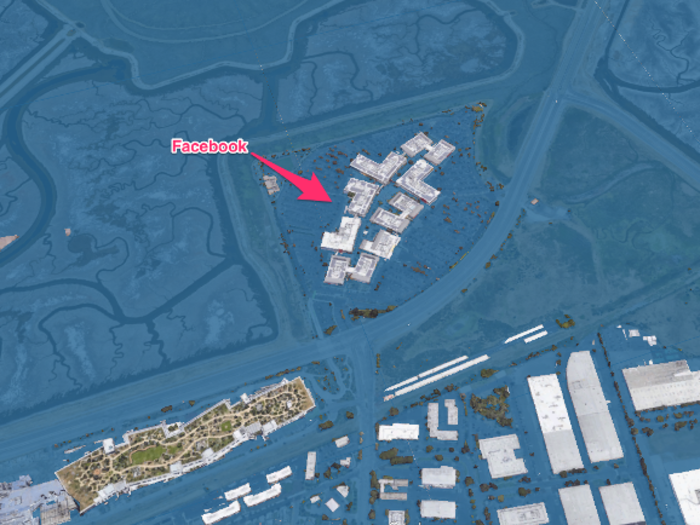
Researchers estimate that by the year 2100 the sea will rise an average of between four and five feet in the the Bay Area, putting the current headquarters of Silicon Valley companies like Facebook and Yahoo underwater, if nothing more is done to mitigate the effects of climate change.
In the city, sea levels are expected to rise 66 inches by 2100. That's five and a half feet.
But the flooding problems don't end with seawater. San Francisco is also sinking into the ground at a rate of around 10 millimeters a year.
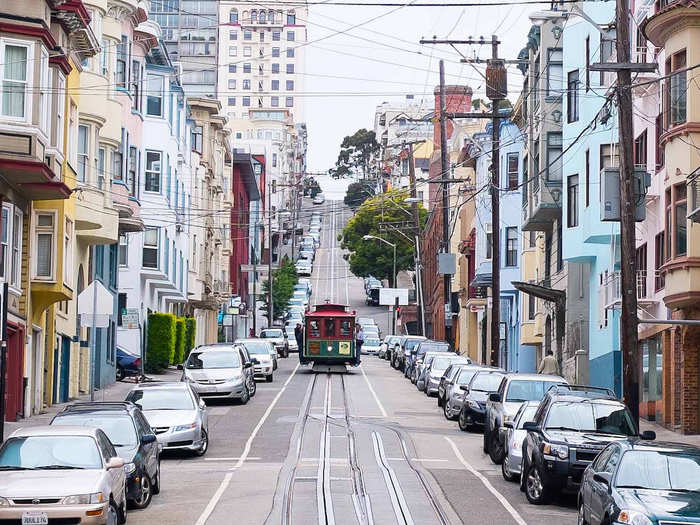
The natural caving-in process at work is called "subsidence," and it's happening because the city is built on heaps of trash and Holocene-era mud that's slipping away.
And more more frequent storms could make landslides and flooding more common.
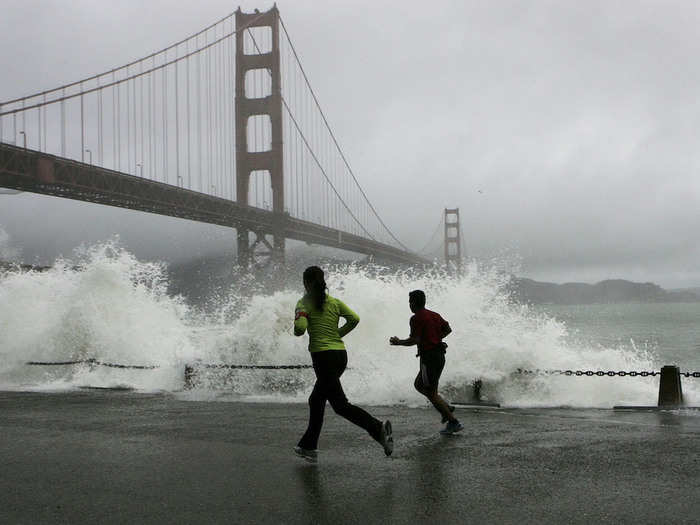
"Severe storms can cause landslides, coastal flooding, and stormwater ponding," the city warns.
Scientists predict we'll see many more of those kinds of events in the coming years, as more "surprise" and potentially irreversible climate events crop up around the globe.
California's seemingly never-ending series of droughts is also a concern for San Francisco Bay Area residents.
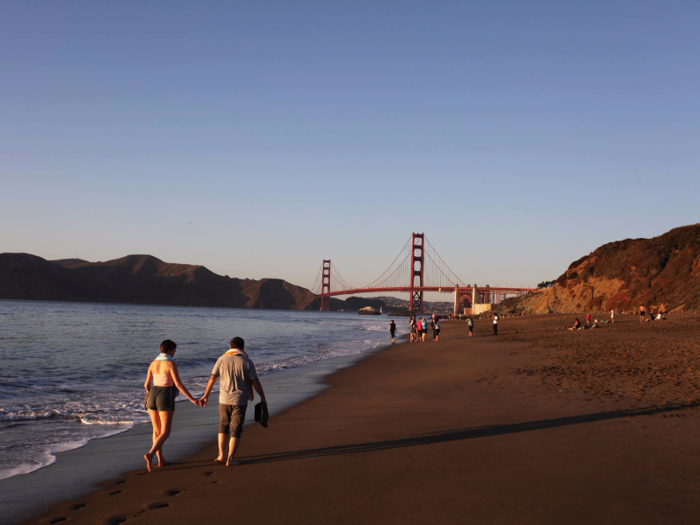
The Bay Area, like much of California, is "abnormally dry" this spring, SF Gate reports, though the maps are getting better with each passing week.
Still, supplying Californians with enough water to live is increasingly becoming an expensive problem. The Pacific Institute estimates that municipal water costs in California metro areas rose at two to three times the rate of inflation between 2000-2010.
With more extreme climate shifts and heat waves on the way, San Francisco will have an unusual problem on its hands: a lack of air conditioners.
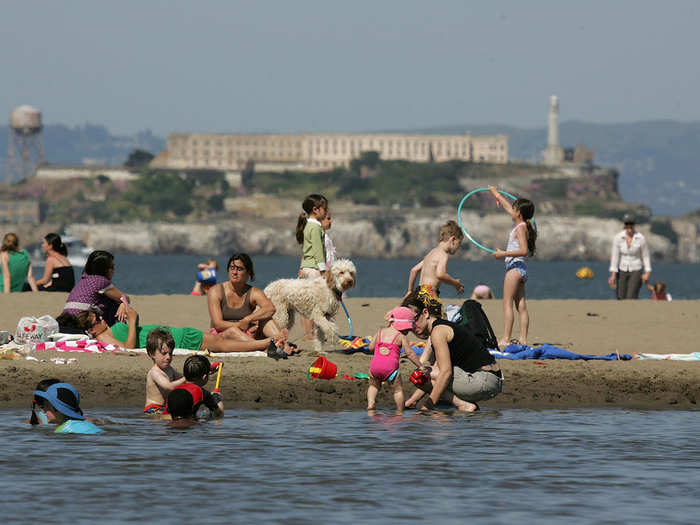
With extreme weather events and heat waves on the rise around the world, people in San Francisco may have a tougher time than other Americans finding relief from scorching temperatures at home, at least in the near future.
According to the 2011 housing survey of the US Census, "the Bay Area had the lowest percentage of housing units with central air conditioning (10%) of any region in the country," the San Francisco Business Times reports. That compares with 66% of people nationwide who said they have central air at home.
If you decide to stick around the Bay Area, it's probably time to make sure you're prepared for all these various disasters with a well-stocked emergency kit.

The San Francisco Department of Emergency Management suggests having enough water, non-perishable food, and flashlight batteries on hand to last about 3 days.
Because in San Francisco, you just never know.
Popular Right Now
Popular Keywords
Advertisement